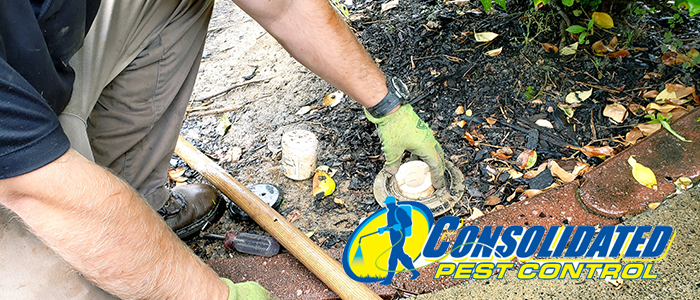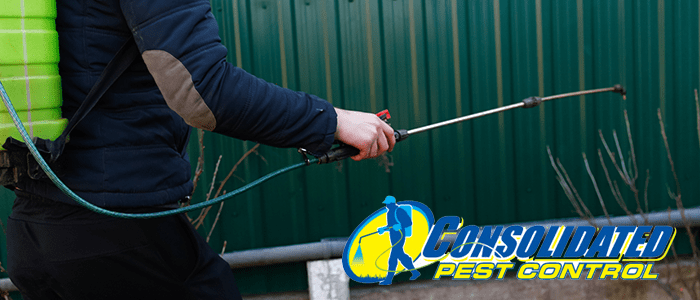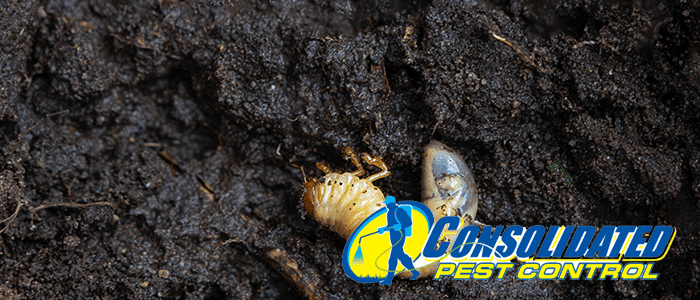
10 Common Pests in Plant City, FL and How to Identify Them
Welcome to Plant City, FL, where beautiful gardens and lush lawns thrive! But with such beauty comes the inevitable presence of unwanted pests. As a homeowner or gardener, it’s essential to be able to identify these pests and understand the damage they can cause. That’s why Consolidated Pest Control, your trusted local pest control and lawn fertilization company in Plant City, is here to provide you with the knowledge you need to protect your home and garden. In this blog post, we’ll explore the 10 most common pests in Plant City and how to identify them, empowering you to take control of your pest problems.
Aphids
Aphids are tiny, pear-shaped insects that feed on the sap of plants. They vary in color, but most commonly are green, yellow, brown, or black. You can easily identify aphids by their soft bodies, long antennae, and the honeydew they produce, which leaves a sticky residue on your plants. Aphids can multiply rapidly and cause stunted growth and distorted leaves. To control aphids, rinse plants with a strong stream of water or use insecticidal soap.
Whiteflies
Whiteflies are small, winged insects that resemble tiny moths. They feed on the underside of plant leaves and secrete a sticky substance called honeydew. You may notice a cloud of whiteflies when disturbed or see the sticky residue on your plants. Whiteflies weaken plants and spread diseases. Encourage natural predators like ladybugs and lacewings, or apply insecticidal soap to control their population.
Scale Insects
Scale insects are small, flat or oval, and come in various colors such as brown, black, or white. They often resemble tiny bumps on plant stems or leaves. Scale insects can weaken plants by piercing the plant and sucking out sap. They secrete a wax-like coating that protects them from predators and pesticides. Control scale insects by scraping them off the plants or applying insecticidal oil.
Mealybugs
Mealybugs are soft-bodied insects covered in a white, powdery substance that resembles cotton. They gather in clusters on plant stems, leaves, and crevices. Mealybugs feed on plant sap, causing stunted growth and leaf yellowing. Remove them manually or apply insecticidal soap to control their population.
Caterpillars
Caterpillars are the larval stage of butterflies and moths. They vary in color and size, but most often have a segmented body with distinct patterns and colors. Caterpillars can cause severe damage by chewing on leaves, stems, and fruits. Handpick larger caterpillars or use organic insecticides targeting specific species to control their population.
Sod Webworms
Sod webworms are small, white or grayish-brown caterpillars that feed on grass blades, creating brown patches in your lawn. You may notice small silk webs in the grass and the presence of birds like blackbirds or grackles that feed on them. Use a targeted insecticide to control sod webworms.
Chinch Bugs
Chinch bugs are tiny, black insects with distinctive white wings that form an “X” shape on their back. They feed on grass roots and suck out moisture, causing yellow patches in your lawn. Chinch bugs thrive in hot and dry weather. Apply a labeled insecticide or use natural methods like applying neem oil to control chinch bug populations.
Fire Ants
Fire ants are reddish-brown ants known for their painful stings. They build large mounds in open areas and lawns. Fire ants can cause damage to plants and pose a threat to humans and pets. Use bait or insecticides specifically formulated for fire ants to control their colonies.
Snails and Slugs
Snails and slugs are slimy pests that feed on the leaves, stems, and fruits of plants. They leave behind silvery trails and can quickly decimate your garden. Use physical barriers like copper tape or apply iron phosphate-based baits to control snails and slugs.
Rodents
Rodents like rats and mice can cause extensive damage to your home and garden. They chew on plants, create burrows, and contaminate food sources. Look for gnaw marks, droppings, and burrow openings to identify rodent activity. Use traps or contact a professional pest control company like Consolidated Pest Control to safely and effectively eliminate rodents from your property.
Keeping Common Pests in Plant City Off Your Property with Us
Now that you know how to identify these common pests in Plant City, you’re better equipped to protect your home and garden. However, if you’re facing a pest infestation beyond your control, don’t hesitate to contact Consolidated Pest Control. With our expertise and personalized solutions, we’ll ensure that your home and garden remain pest-free, allowing you to enjoy the beauty of Plant City to its fullest.
Protect your home and garden from common pests. Get in touch with Consolidated Pest Control today!








